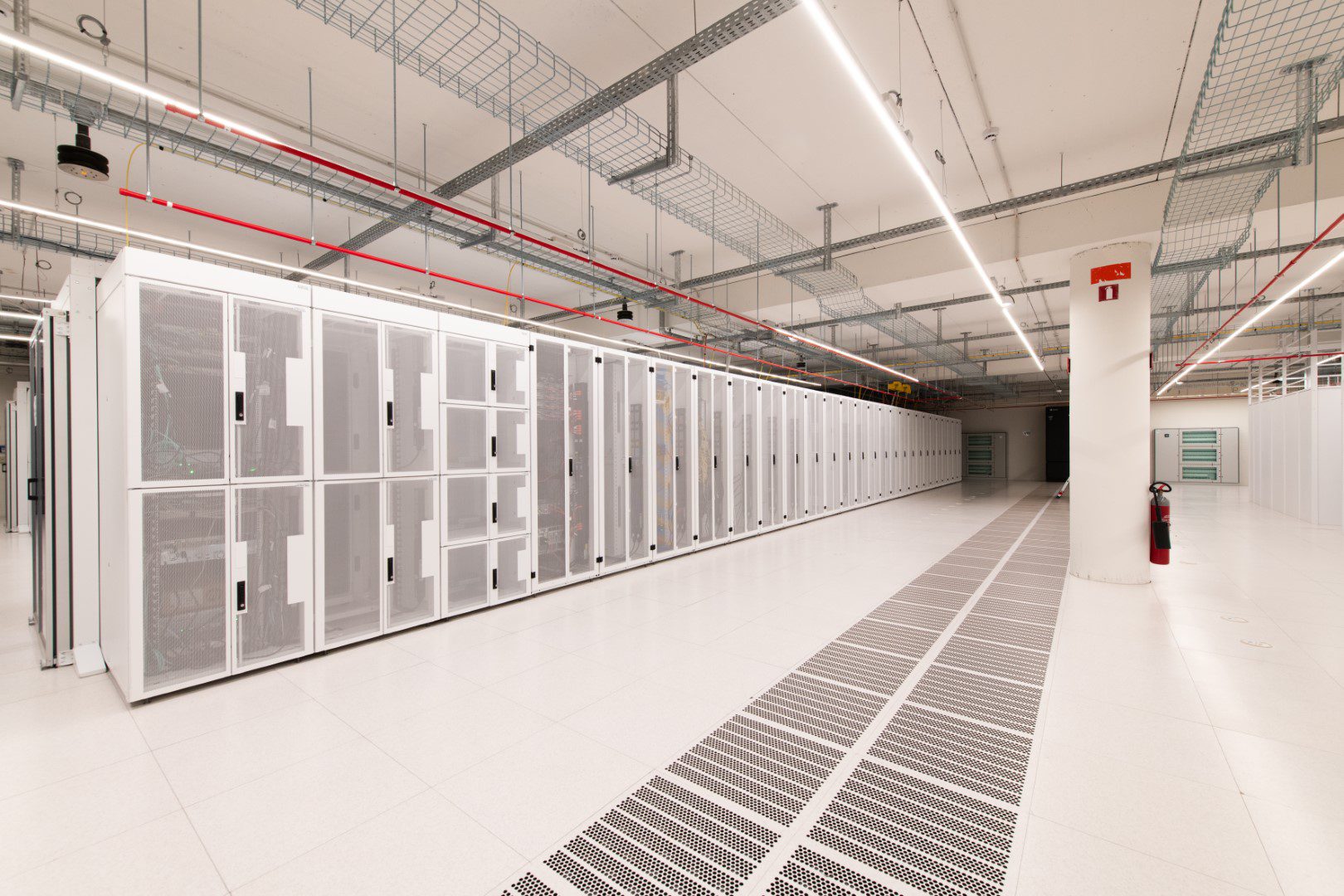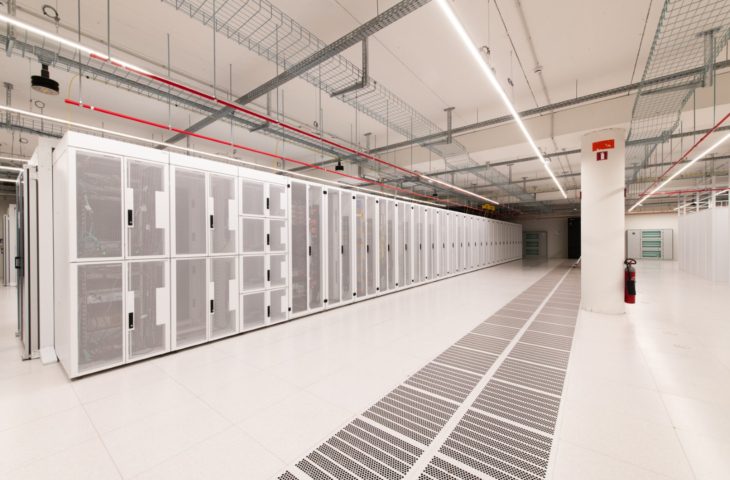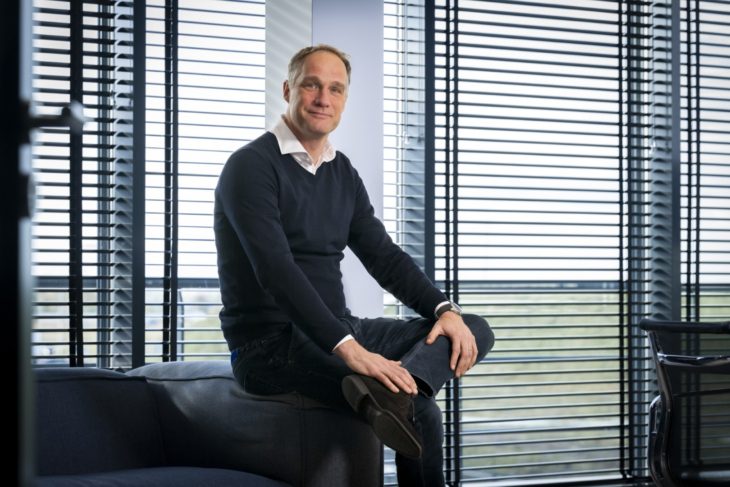The colocation data center: the cornerstone of modern IT architecture
- December 14, 2023
- 0
It’s not for nothing that a huge building with the Digital Realty logo on the facade is being built in Zaventem. In the current IT landscape, not only
It’s not for nothing that a huge building with the Digital Realty logo on the facade is being built in Zaventem. In the current IT landscape, not only


It’s not for nothing that a huge building with the Digital Realty logo on the facade is being built in Zaventem. In the current IT landscape, not only are hyperscalers growing, colocation specialists are also having to step up a gear to keep up with demand. The cloud is not suitable for many workloads and then a different type of data center is attractive.
“Many companies need control over their data and their workloads,” says Vincent in’t Veld, Regional Lead Northern Europe at Digital Realty, which completed the acquisition of local data center specialist Interxion in 2020. “Many companies had a cloud-first strategy for a while, but IT professionals are now realizing that not everything can, should or may be migrated. For example, end customers want their own network infrastructure, their own storage for compliance purposes or simply more control.”
In’t Veld recognizes this in the role that digital realty plays today. David Louis, current sales and marketing manager for the colocation specialist and, like his colleague, an Interxion star, also recognizes the trend. He explains: “The server park used to be located within the company itself. Now the IT environment is much more distributed. We have evolved from a traditional environment to a hybrid architecture with parts from different players. Both performance and connectivity are very important for such an IT landscape.”
Companies can no longer simply provide both themselves. First and foremost, the hardware has changed. Nowadays servers are more powerful and poet than ever, but a single rack requires more power and is more difficult to cool. This is no longer possible in an energy-efficient manner in the back room of the administration building.
“The increase in new customers partly consists of companies that want to refresh their own data center,” explains in’t Veld. “They are looking for a future-proof infrastructure.” Digital Realty has such an infrastructure in its data centers with modern cooling technology, power supply, connectivity and security.
During our conversation, we see BRU4 through the window: Digital Realty’s brand new data center, which will soon be completely finished. It has been designed with future-proofing in mind and will be able to efficiently handle HPC systems in addition to traditional workloads.

Companies can no longer create such a framework for their data center hardware themselves, especially not with a solid one Effectiveness of power consumption usage or PUE. This is a measure of the additional power you need to support a given amount of IT material. For modern servers that require a lot of cooling, the PUE can be high for those that do not have sufficient resources. Conversely, a party like Digital Realty can keep PUE low thanks to the size of its data centers and investments in modern technology. Moving the hardware from your own basement to a colocation data center is not only a practical but also an ecological decision.
Additionally, in a hybrid context, connectivity between on-premises hardware, hyperscaler applications, SaaS software, and users across the country is critical. Your own IT infrastructure must therefore be optimally connected to the networks of cloud players, for example.
This connectivity is a historic specialty of Digital Realty. “The world looked completely different 25 years ago,” says in’t Veld. As telecommunications liberalized and other players entered the market, a neutral location was needed to connect the different networks. We then built the house where everyone could come together in a safe and controlled place.”
We then built the house where everyone could come together in a safe and controlled place.
Vincent in’t Veld, Regional Manager Northern Europe Digital Realty
The original Interxion data center was therefore more of a communications hub, where network equipment was cooled and maintained and networks were connected together. “In the beginning the focus was on language, but slowly the Internet and applications were added. Digitalization has significantly increased the need for neutral coupling points.”
Today’s BRU1 data center was created as such a connection point at a location where sufficient electricity and an international fiber optic cable were available. By nature, operator networks were attracted to this location. “Fourteen years ago there were around thirty Telekom parties in the data center, today there are more than a hundred.”
Today, Digital Realty not only connects operator networks, but also offers lightning-fast access to hyperscalers, for example. Louis: “Anyone who comes to us always has the right building blocks with a direct connection and…” Express routes.”
“We’re good at that,” says in’t Veld. “That’s why we invested in a platform that has literally taken over network and cloud companies. Both customers and service providers are connected to our data center infrastructure, allowing customers to manage their own connectivity needs through a software portal.”
The demand for a professional and well-connected environment to install your own hardware is increasing rapidly. Louis and in’t Veld expect that the need for colocation space is increasing rapidly despite the increasing density and smaller footprint of modern servers. “Every four years the hardware is thoroughly renewed and we see almost three times as much capacity in the same place,” says Louis. “The innovations that customers implement permanently reduce their footprint. In the long term, more customers can fit in the same space.”
And yet there is a need for BRU4. “It used to take ten years to fill a data center with a capacity of 7.5 MW,” explains in’t Veld. “BRU4 will receive double this amount and could be full within two to three years.
BRU4 can be full within two to three years.
Vincent in’t Veld, Regional Manager Northern Europe Digital Realty
Digitalization is therefore not an either/or situation in which companies choose the cloud or their own hardware. Reality is a mix, and that mix only really comes into its own when the local piece is in a suitable location. On-premise no longer means in your own building, but on your own servers, which may be located in an external data center.
In’t Veld and Louis believe Digital Realty has a more interesting offer than Interxion did a few years ago. In’t Veld: “We have strong local roots but a global presence. We are the only provider in Belgium that can offer this on this scale.” In this way, companies with an international presence can place on-premise hardware with one player worldwide, which is a big advantage in the opinion of both men.
Source: IT Daily
As an experienced journalist and author, Mary has been reporting on the latest news and trends for over 5 years. With a passion for uncovering the stories behind the headlines, Mary has earned a reputation as a trusted voice in the world of journalism. Her writing style is insightful, engaging and thought-provoking, as she takes a deep dive into the most pressing issues of our time.